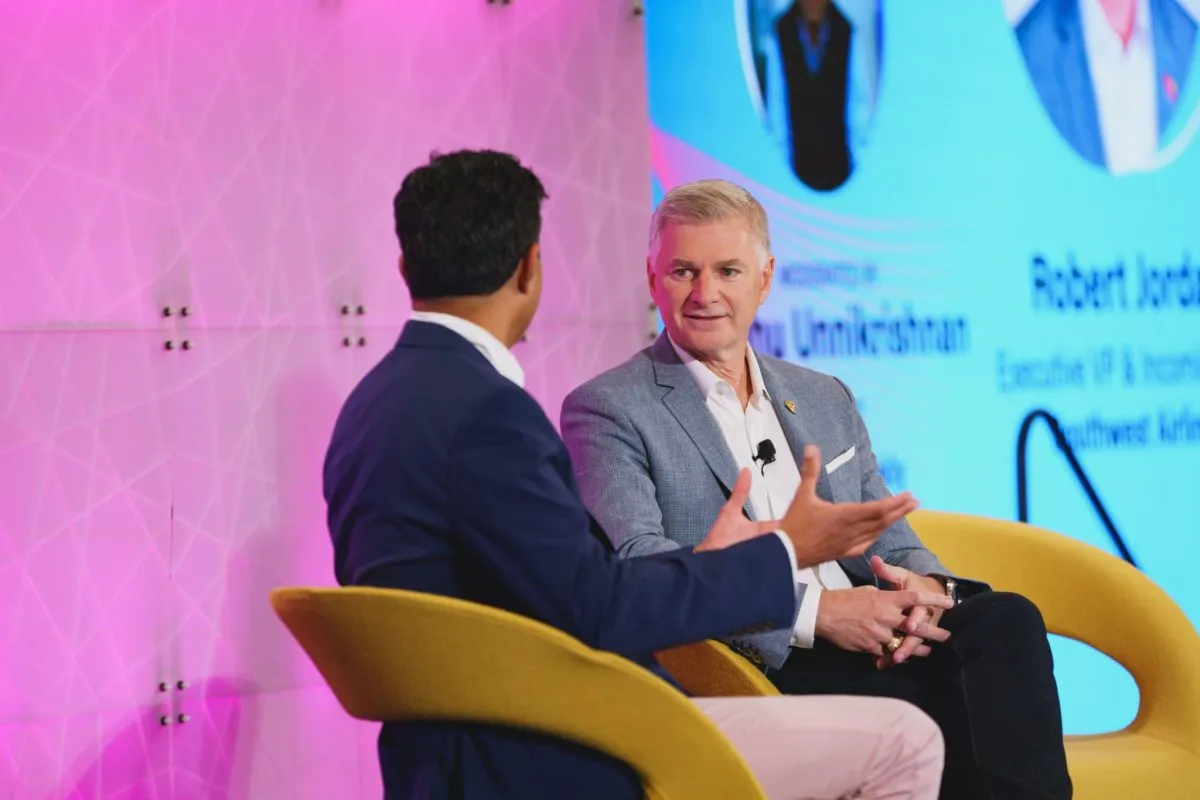The Era of Personalization in Event Tech Is Finally Here

Skift Take
In just a matter of years, smartphones apps for events have become integral to both the event experience and sales efforts to bring in future attendees and sponsors.
The next step forward, however, involves new thinking about the power of data to reinvent how organizations plan events and market to their attendees.
Michael Balyasny, co-founder and CEO of event app provider Attendify, believes that increased personalization has the ability to not only improve how people experience events, by allowing more face-to-face connections, but empower meeting professionals with more powerful insights about creating value.
"Personalization and engagement data is really the key to where event tech is headed," said Balyasny. "If we look back historically, there's been no cost-effective, good way to capture engagement data from events. There were surveys and badge tracking and beacon technology, but mobile apps are much simpler. Attendees actually want to engage with them."
Skift spoke to Balyasny about the emerging promise of personalization, the evolution of event app capabilities,, and why planners are embracing data management.
This interview has been edited for length and clarity.
Skift: Event apps have become a must-have for many in recent years. How has your offering evolved over that time?
Michael Balyasny: The opportunity we saw was to make apps more accessible and more affordable. Make the whole process of delivering an app for a conference, a trade show, corporate meetings, all kinds of different events, just make that process easier. We found that event planners, while there was some skepticism at first about a do-it-yourself model, they are inherently attracted to that kind of model because they're hands on. They're all about executing the event, they're all about the catering, the hotel, the meeting group, getting speakers on board, they're very hands-on and their job is all about coordinating. This was a very accessible tool, one that made sense, and has fueled a lot of growth for us.
The other factor that really fueled a lot of growth was the fact that we launched a private social networking experience within our app. So really, before we launched, most event apps were really just a digital version of the event guide. So, the schedule, the list of speakers, the sponsors, exhibit maps, and so forth. We added that whole networking component and that got a lot of people, especially in the conference, very excited because networking is the core pillar of their events and really one of the primary reasons why attendees attend is to connect with each other, to connect with sponsors and exhibitors. To have a tool that fueled that was important. Those were the two factors that really fueled a lot of growth for us.
Recently, we've been focused on helping event planners put the data that they're collecting through their event app, all the engagement data around how people are consuming content and learning and networking with each other to work to help personalize the best experiences, to drive personalized marketing campaigns, and we're doing that through a new product called Attendify Audiences.
So you have to put audiences in a specific sort of bucket. We think of it as a data management solution for events, because there's a lot of really neat, really compelling data that's generated from apps from a lot of different sources, and we're now helping event planners pull that all into a single platform and be able to create very specific audience segments, highly personalized, and put those to work in advertising campaigns, emails, marketing campaigns. We really want to help bridge the gap between digital and event marketing and that's the foundation for doing that.
Skift: Data analytics and insights seem to be the next step forward for event apps. A wealth of information is generated when attendees use event technology, but not much is really being done to create meaningful insights for planners based on that data. How do you look at this challenge for event professionals?
Balyasny: That's a great question. I think personalization and engagement data is really the key to where event tech is headed. If we look back historically, there's been no cost-effective, good way to capture engagement data from events. There were surveys and badge tracking and beacon technology, but mobile apps are much simpler. Attendees actually want to engage with them.
There's a lot of data flowing off of the app and what we're able to do is use that data to run personalization and campaigns to customize the event experience, but also marketing campaigns that drive attendance, that drive repeat ticket purchases. The event data we've been capturing through our app in a new product called Attendify Audiences that just launched late last year. That's really the core of our vision for the company in the future. Helping customers put their data to work and to optimize event experiences and personalize them.
Skift: When you talk to event folks about this, is it a challenge to get them to buy into this vision?
Balyasny: I think they intuitively get it. So let's say you're a conference organizer, you have an event for about 1,000 attendees. There are multiple tracks, different sessions, lots of different speakers and if you look at what's going on on the ground, event planners really have no way to measure [what's going on], but they'd love to because they live with the frustration of not being able to look up that engagement data.
Historically, there's just been no way to capture it. So let's say you wanted to see every subset of that 1,000 people who attended a specific session or who attended a specific track of sessions and engaged with a speaker and are a C-level executive. As well, if you wanted to pick out those 20 to 30 people and then use that data to run a personalized email marketing campaign to help upsell them on a ticket next year. Or just to drive renewals, or any other number of creative ideas that you could have. There was just no way to do that.
Skift: So basically, it's something they didn't even realize they needed.
Balyasny: Event planners know that they need this. They know that their sponsors and exhibitors are asking for data like this, because if you're a sponsor and you put $50,000 dollars into a show, all you get essentially is your booth space. Sure, you collect great leads, but how do you know who was engaged with the content? Who was engaged with the speaker from your company that had a session or a speaking slot?
This gives you so much more depth and intelligence around both optimizing event experiences, but also helping drive return on investment for all stakeholders. I think it's essential and planners just intuitively get it.
Skift: As you look forward, what sort of trends are you following as Attendify's product offerings continue to evolve?
Balyasny: We want to capture that entire life cycle across all events because we have a lot of customers who are running dozens, if not hundreds, of events a year. They want to be able to understand their full audience across all those events. Having done the hardest part of the job, which was creating a compelling mobile app, that we can deliver at scale, that captures the richest engagement data. Having done that and built this data platform to pool all that data in one place and store it and make it searchable and filterable and create those personalized segments. Now, we are thinking about adding some of those other components like event registration because that will give us more data to work with.
If you think about the ways that event planners can use that data, and the value that will create for their business and also for their sponsors and exhibitors, that is really where we're headed. The other traditional platform tool like registration and so forth are important, but for our roadmap they were secondary and something we're working on now because the hardest piece was the mobile platform and data platform. We think about it a little bit differently [than other event tech providers] and mobile is really the key to where event tech is going because that's really what powers every other capability that you would want from a marketing or personalization perspective.





